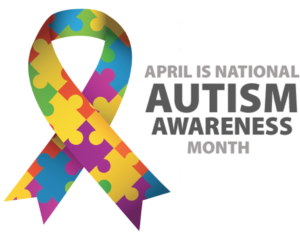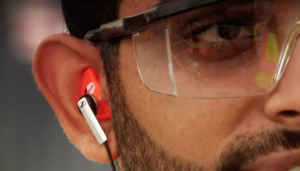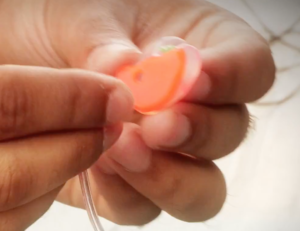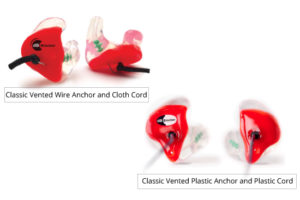by Stephen Yontz, President of FitHearing, LLC
Hearing loss affects over 48 million people in the U.S., according to the Hearing Loss Association of America, and puts them at greater risk for cognitive decline and even dementia. The age group affected by the greatest amount of hearing loss are those between 60-69 years old.
Dr. Frank Lin, an otologist and epidemiologist at Johns Hopkins University in Baltimore says, “The general perception is that hearing loss is a relatively inconsequential part of aging.” However, recent findings suggest that it may play a much more important role in brain health than we’ve previously thought, he added.
There have been recent, well-regarded studies that support the possibility that treating hearing loss more aggressively could aid in the prevention of cognitive decline and dementia. Dr. Lin has authored several recent studies that aim to link hearing and cognitive problems that range from mild impairment all the way to dementia. He and other researchers have theories about an explanation for the link between the two, though they are not sure which will prove true.

The Search for Connections
A 2013 study led by Dr. Lin and his colleagues tracked the overall cognitive abilities of memory, concentration, and planning skills of almost 2,000 people with an average age of 77. Over six years, participants who began the study with hearing loss severe enough that it interfered with their conversation were 24 percent more likely to see their cognitive abilities diminish than those with normal hearing. The researchers found that hearing loss seemed to hasten age-related cognitive decline.
In 2011, Dr. Lin and his colleagues studied the cognitive health of 639 mentally sharp people in a study that focused on dementia. The volunteers’ mental abilities were tested regularly, with many participating for about 12 years and others for as many as 18 years.
The notable results showed that the worse the initial hearing loss was, the more likely the participant was to develop dementia. When compared to people with normal hearing, the risk was three times as great for those with moderate hearing loss.
Another study offers more hope still. Led by Isabelle Mosnier of Assistance Publique-Hopitaux de Paris in France and published in the journal JAMA Otolaryngology-Head & Neck Surgery, March 2015, the study consisted of a group of 94 people ages 65-85 with profound deafness in at least one ear. Each of the participants received a cochlear implant followed by auditory rehabilitation twice a week. Those with the lowest cognitive scores showed remarkable improvement one year after implantation.
While the study had shortcomings, “the improvement in cognition was huge — about double that seen with any of the current [U.S. Food and Drug Administration] FDA drugs for treating Alzheimer’s,” says P. Murali Doraiswamy, M.D. The professor of psychiatry and medicine at Duke University School of Medicine and coauthor of The Alzheimer’s Action Plan also theorizes that the findings about hearing loss affecting cognitive function could also apply to other senses, like vision, smell, and touch. “Studies have shown that uncorrected vision problems raise the risk for dementia,” he says.
Possible Connections Between Hearing Loss and Dementia
Some doctors hesitate to acknowledge a connection between disabling hearing loss and cognitive decline and dementia, but more and more healthcare professionals are accepting the possibility. “Every doctor knows that hearing loss can result in cognitive problems, but they still don’t focus on it as a priority when they evaluate someone with suspected dementia — which is a big missed opportunity,” Doraiswamy says.
“The benefits of correcting hearing loss on cognition are twice as large as the benefits from any cognitive-enhancing drugs now on the market. It should be the first thing we focus on.”
Dr. Lin suggests four possible ways hearing loss might contribute to cognitive decline and dementia. The first is a condition like high blood pressure: a common physiological pathway that contributes to both, but he and other researchers used statistical methods to take into account the factors known to be associated with both conditions, so Lin does not have much confidence in this explanation.
The second possibility has to with “cognitive load,” or the effort of constantly straining to understand puts stress on the brain. Intuitively, this connection makes sense.
Arthur Wingfield, professor of neuroscience at Brandeis University, explains, “If you put in a lot of effort just to comprehend what you’re hearing, it takes resources that would otherwise be available for encoding [what you hear] in memory.” His lab’s research has documented this effect on a short-term basis. He questions if whether years of drawing resources away from brain functions such as working memory will eventually reduce the brain’s resilience.
A third possibility, proposed by both Wingfield and Lin, suggests that hearing loss might affect brain structure in a way that contributes to cognitive problems. It has been found that older adults with hearing loss have less gray matter in the part of the brain that receives and processes sounds, according to Wingfield. Certain brain cells shrink in the absence of constant stimuli. Wingfield then raises the question whether getting clearer speech signals to the brain through use of a modern hearing aid might allow these brain structures to recover their previous size and function.
Lastly, it is likely that social isolation plays a part. Having disabling hearing loss tends to isolate people from their friends and family. The constant struggle to follow conversation often makes hard of hearing people not want to socialize in groups. Social isolation has been infamously recognized as a risk factor for cognitive decline and dementia.
Seeking Treatment for Hearing Loss
It will certainly take more research in the coming years to pinpoint the factors associated. Can state-of-the-art treatment prevent or delay cognitive decline and dementia, Dr. Lin wonders? He and his team have received funds from the National Institute of Health to plan and develop a definitive clinical trial to monitor a large group of older adults with hearing loss. Half of the participants will receive best-practice hearing treatment and the other half will get what Dr. Lin calls “watchful waiting.” The study will track the participants’ cognitive functions, with results available in 2020 at the earliest.
If you have hearing loss, Dr. Lin believes that one should get the best treatment available, as it can also take into account your mental health and cognitive ability as well. There is much room for improvement, though, as fewer than 15 to 20 percent of those with a clinically significant hearing loss even use hearing aids.

About the Author
 Stephen Yontz is Founder and President of FitHearing – a new-patient referral service for local practices with a focus on maintaining and valuing professional Audiology and hearing care, while serving an emerging market for price-shopping, informed hearing aid consumers. He is Co-Owner and Director of Operations for an Audiology practice in Nashville, TN, and shortly after assuming this role, he recognized a need for the support of those patients that are not willing to pay the “seemingly” high price for traditional hearing care – those that inevitably seek alternative solutions that do not meet the basic needs of a person suffering from hearing loss.
Stephen Yontz is Founder and President of FitHearing – a new-patient referral service for local practices with a focus on maintaining and valuing professional Audiology and hearing care, while serving an emerging market for price-shopping, informed hearing aid consumers. He is Co-Owner and Director of Operations for an Audiology practice in Nashville, TN, and shortly after assuming this role, he recognized a need for the support of those patients that are not willing to pay the “seemingly” high price for traditional hearing care – those that inevitably seek alternative solutions that do not meet the basic needs of a person suffering from hearing loss.
He believes that as an industry we are largely falling short in terms of serving our customer with innovative and alternative solutions to meet everyone’s hearing health and financial needs. FitHearing offers patients the option to purchase the latest and greatest hearing aids at very affordable prices, while integrating the vital care of a local Audiologist or hearing specialist as a means for the patient to receive proper programming, fitting, counseling, and adjustments of his/her hearing aids.
Stephen is a graduate of the University of Tennessee, with an M.S. Mechanical Engineering and an MBA. Stephen lives with his wife and two cats in Nashville, TN, where he spends his spare time playing golf, “picking at” his guitar, going to the movies, exercising, and trying new foods. Truthfully, he spends most of his time thinking of new ways to serve the hearing industry and develop innovative solutions for the future generations of hearing aid users.








 In addition to monitoring and training, employers must also provide workers with suitable equipment to protect hearing while at work. In fact, this is an OSHA requirement for workplaces where the noise levels meet or exceed 85 dB.
In addition to monitoring and training, employers must also provide workers with suitable equipment to protect hearing while at work. In fact, this is an OSHA requirement for workplaces where the noise levels meet or exceed 85 dB. What is obvious to one person may not be obvious to another, according to Bethany Graves (Watson), a consultant specializing in occupational safety based out of Jefferson City.
What is obvious to one person may not be obvious to another, according to Bethany Graves (Watson), a consultant specializing in occupational safety based out of Jefferson City. 

 April is World Autism Month, an annual opportunity for a dedicated conversation about autism spectrum disorder. Autism touches more than 70 million people globally. Approximately 1 in 66 children and youth are diagnosed with Autism Spectrum Disorder in Canada and this number continues to grow.
April is World Autism Month, an annual opportunity for a dedicated conversation about autism spectrum disorder. Autism touches more than 70 million people globally. Approximately 1 in 66 children and youth are diagnosed with Autism Spectrum Disorder in Canada and this number continues to grow.





 cords for seamless integration with many radios while conserving hearing.The dB Blocker™ Convertible Non-Vented Offers the same hearing protection as the dB Blocker™ Classic Non-Vented but has a removable cord. It is particularly suited for industrial applications where there is high air movement (wind noise) which may cause a whistle in the vent.
cords for seamless integration with many radios while conserving hearing.The dB Blocker™ Convertible Non-Vented Offers the same hearing protection as the dB Blocker™ Classic Non-Vented but has a removable cord. It is particularly suited for industrial applications where there is high air movement (wind noise) which may cause a whistle in the vent.


SOURCE